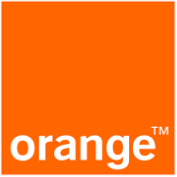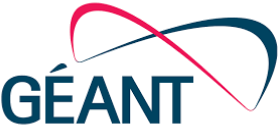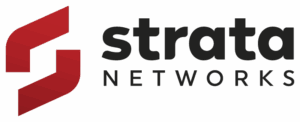Building a Visibility-Driven OSS Architecture for Leased Lines
Trusted by:

















Leased lines keep the world’s most critical services connected — but when visibility breaks down, so does profitability. Discover how a visibility-driven OSS architecture transforms leased line management, eliminates hidden revenue loss, and builds customer trust — with VC4 Service2Create leading the way.
Achieving clarity in leased line operations doesn’t mean discarding legacy systems. It means changing architectural intent so visibility becomes intrinsic to OSS behaviour—not an afterthought.
Key Architectural Shifts
- From Static Records to Dynamic States – Inventory must be self-healing, updating automatically as the leased line network changes.
- Service Definitions with Commercial Context – Provisioning should embed billing logic, SLA details, and customer ownership from the outset of each leased line’s lifecycle.
- Continuous Reconciliation – Mismatches aren’t found quarterly; they are detected and resolved continuously.
- Unified Identity Across Layers – Physical ports, logical circuits, and billing IDs should map to a single leased line lineage, traceable end to end.
- Multi-Layer Lineage – Operators should be able to trace every leased line from interface to invoice, across technologies and vendors.
These transformations aren’t about adding another monitoring tool—they’re about designing OSS to deliver truth over process.
When Operators Don’t See, Customers Don’t Trust
Leased lines are mission-critical: they underpin banking systems, emergency services, secure government communications, and corporate WANs. When an operator can’t confidently state where a leased line runs, who owns it, or whether it’s active, it’s not just an operational gap—it’s a breach of customer trust.
Enterprise customers notice when SLA credits are delayed or when a “disconnected” leased line still reaches their premises. Each unresolved discrepancy erodes confidence and, over time, market competitiveness. Visibility in leased lines is more than internal hygiene—it’s a promise to customers that every circuit is exactly as contracted, billed, and maintained.
The Business Impact of True Leased Line Visibility
When operators shift from static documentation to live assurance for leased lines, tangible benefits follow:
- Revenue Leakage Drops – Every leased line is simultaneously tracked in technical and billing systems.
- SLA Disputes Shrink – Operators can prove delivery and performance in real time.
- Network Changes Align – Provisioning updates and field changes propagate automatically, preventing future blind spots.
- Finance Gains Audit-Grade Transparency – Every leased line’s cost and revenue can be traced from infrastructure to invoice.
The result: engineering and finance teams spend less time chasing mismatches and more time delivering value to customers.
Phased Implementation: From Blind Spots to Clarity
Transforming leased line visibility doesn’t require a disruptive overhaul. Successful operators take a phased approach:
Phase 1 – Assessment and Discovery
Audit OSS records, billing data, and live network states to uncover discrepancies. Map orphaned circuits and ghost billing patterns.
Phase 2 – Automated Data Collection
Use discovery agents and API integrations to capture live leased line data from devices, NMS, and EMS platforms.
Phase 3 – Continuous Reconciliation
Run automated reconciliation 24/7, highlighting mismatches between live network state, OSS records, and billing entries.
Phase 4 – Commercial Integration
Link leased line inventory directly to billing and CRM systems, embedding customer, SLA, and pricing info into provisioning.
Phase 5 – Predictive Assurance
Apply AI-driven analytics to detect anomalies early, forecast leased line capacity needs, and optimise resource allocation. Move toward zero-touch assurance where leased line visibility is perpetually aligned.
VC4 Service2Create – The Platform of Choice for Leased Line Visibility
| Advantage | Why It Matters for Leased Lines |
| True End-to-End Mapping | Trace every leased line from physical port to billing record, across vendors and technologies. |
| Real-Time Reconciliation | Detect unbilled, stranded, or duplicate leased lines instantly—no waiting for quarterly audits. |
| Seamless OSS Integration | Works alongside existing OSS, avoiding costly rip-and-replace projects. |
| Commercial Linkage | Every leased line is tied to a customer, SLA, and price point automatically. |
| Predictive Insights | AI forecasts leased line capacity requirements and identifies optimisation opportunities before issues arise. |
Turning Visibility Into Competitive Advantage
End-to-end leased line visibility isn’t just about plugging revenue leaks—it’s about positioning your network as a trusted, agile service platform. Operators with continuous oversight can launch new services faster, optimise leased line capacity, and deliver consistent SLA compliance.
With every leased line mapped to its real commercial and technical state, decisions move from reactive fixes to proactive growth. In an industry where margins are tight, the ability to act on the true network state is the foundation for profitability, trust, and long-term market leadership.
VC4 Service2Create enables this transformation by delivering true end-to-end leased line visibility, real-time reconciliation, and seamless OSS integration. With its multi-layer mapping, commercial linkage, and predictive analytics, it equips operators to not only prevent revenue loss but to confidently expand services, maximise asset utilisation, and strengthen customer trust—turning visibility into a lasting competitive advantage. Get in touch with VC4 if you’re keen to find out more!
Questions That Reveal Revenue Risk
What is end-to-end visibility in leased lines?
It’s the ability to track a leased line across all layers—physical, logical, and commercial—from provisioning to billing, with real-time accuracy.
Why do leased lines cause hidden revenue loss?
When leased lines remain active in the network but are detached from billing systems, operators lose revenue—often due to outdated inventory or poor change tracking.
How can telecoms detect orphaned or unbilled leased lines?
By using continuous reconciliation tools that compare the live network state with OSS records and billing data, ensuring every leased line is accounted for and monetised.






